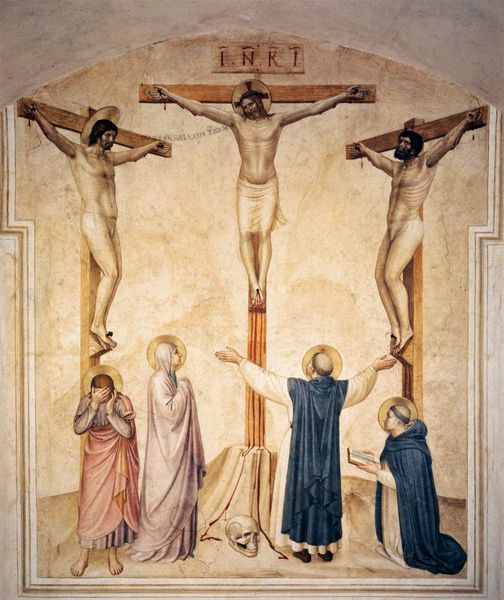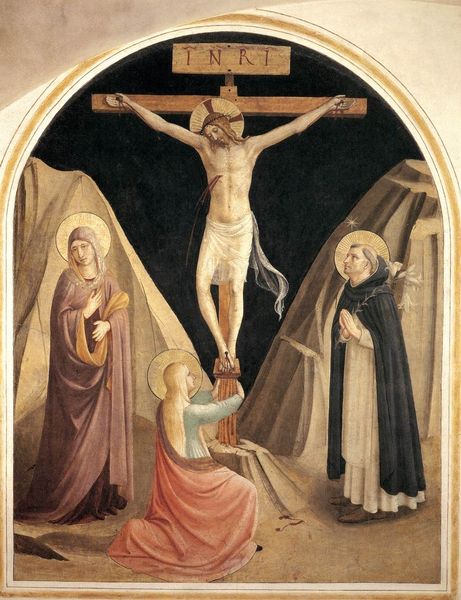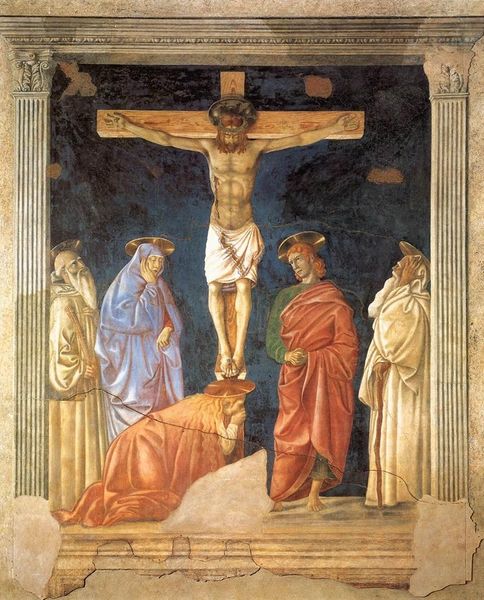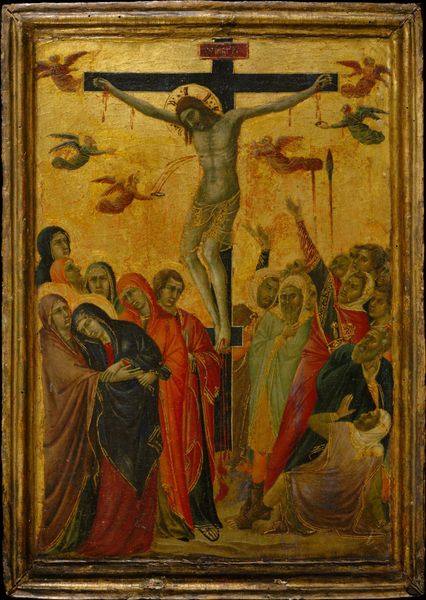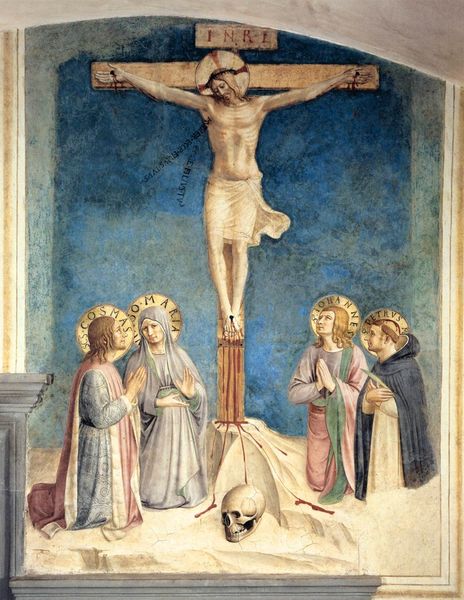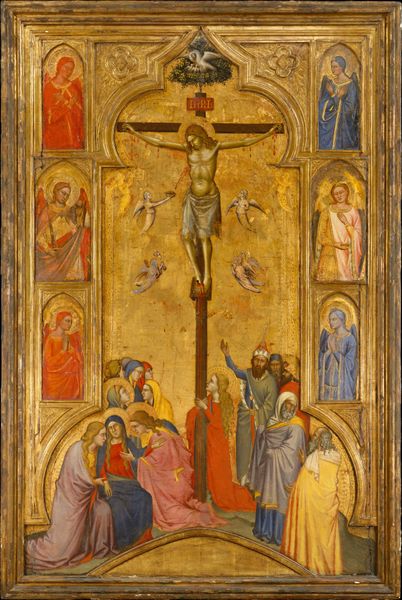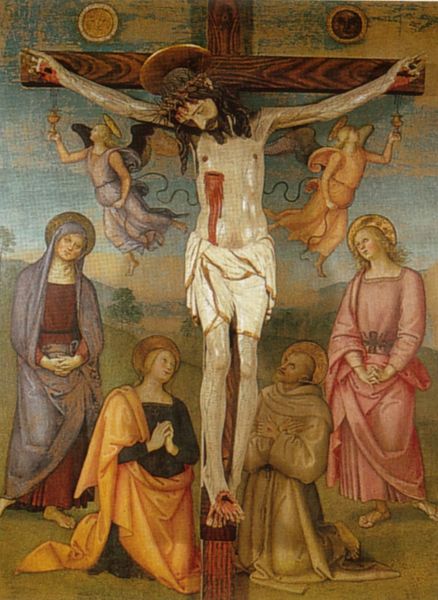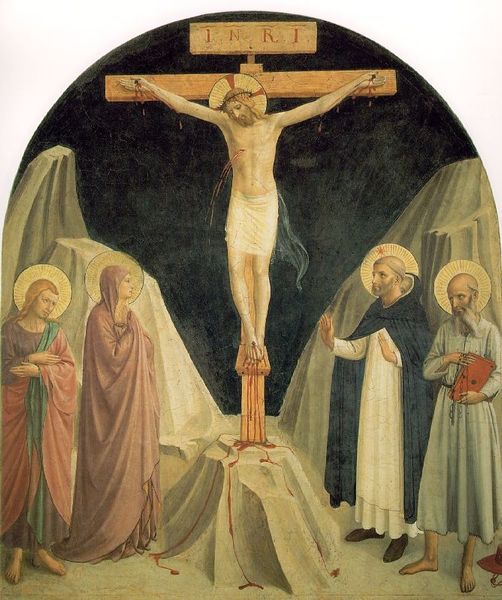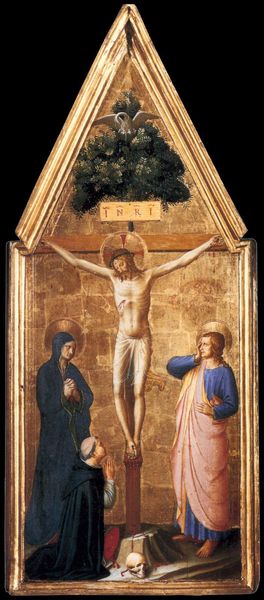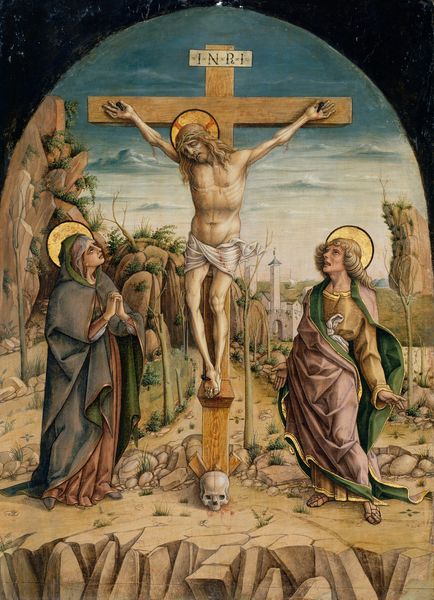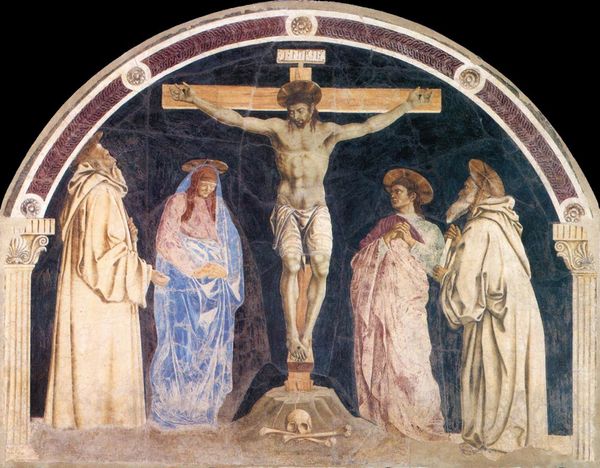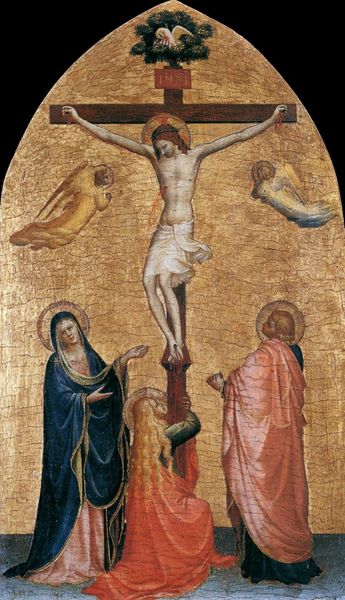
tempera, painting, fresco
#
narrative-art
#
tempera
#
painting
#
perspective
#
figuration
#
fresco
#
intimism
#
abstraction
#
christianity
#
history-painting
#
trompe-l'oeil
#
academic-art
#
italian-renaissance
#
early-renaissance
#
christ
Dimensions: 667 x 317 cm
Copyright: Public domain
Masaccio painted this fresco of the Holy Trinity in the 1420s on a wall of Santa Maria Novella in Florence. Visually, the work is dominated by its architectural structure, which recedes into a distant vanishing point, creating an illusion of depth rarely seen before. The precise lines and geometric forms, rendered in a palette of muted reds, blues and browns, suggest the cool rationality of Renaissance classicism. Masaccio used mathematics to organize pictorial space in a new way. The architecture is not simply a backdrop, but an integral part of the painting's meaning. By employing linear perspective, Masaccio mirrors the Renaissance humanists' interest in realism and the mathematical structures of the world. This perspective creates a hierarchy, with God the Father at the apex, literally elevated above the mortal realm. The artist’s innovative use of perspective invites us to consider how space is not merely a visual phenomenon, but also a construct of human intellect, and how art provides an opening for ongoing analysis and dialogue.
Comments
No comments
Be the first to comment and join the conversation on the ultimate creative platform.
